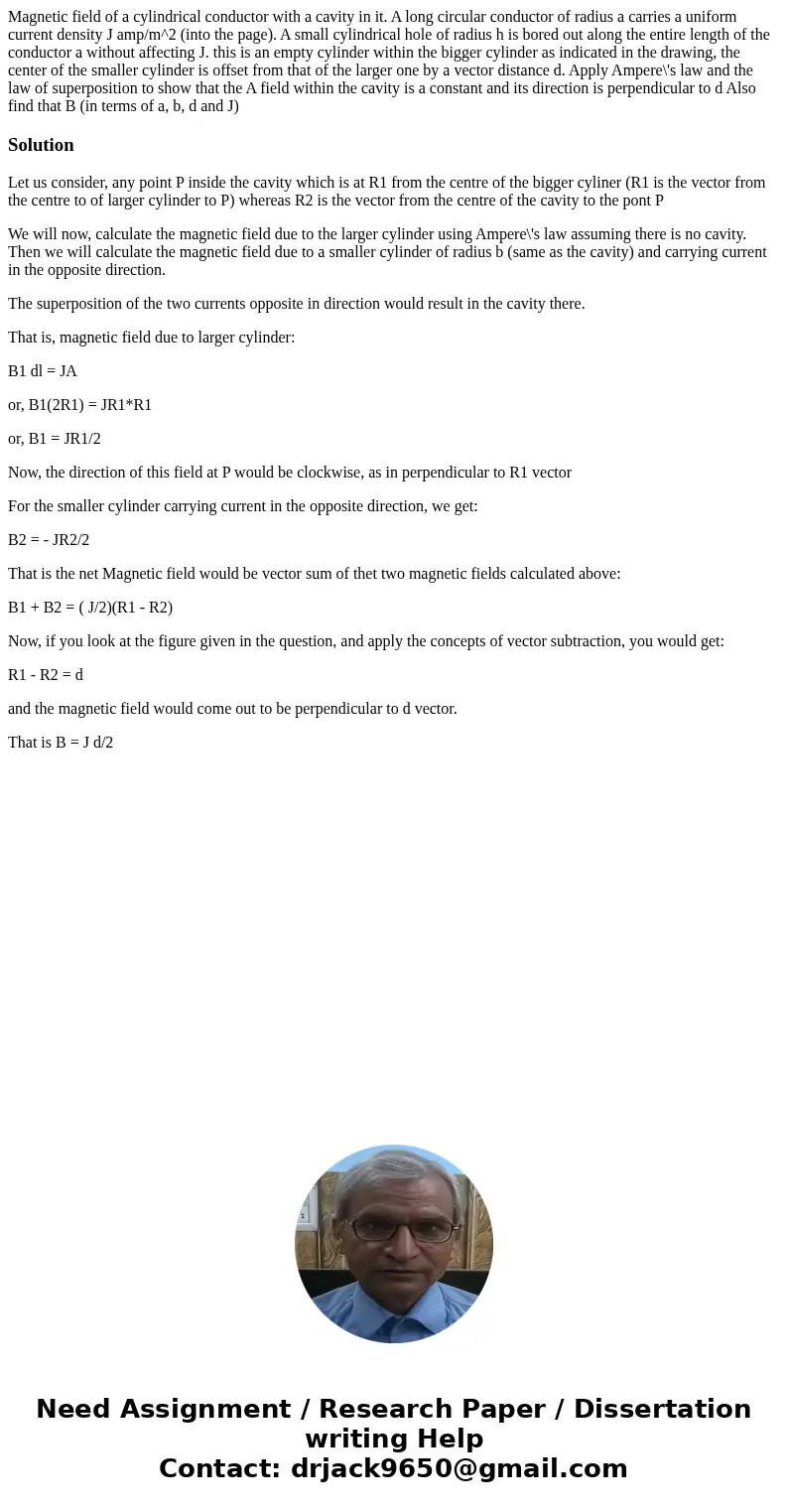Magnetic field of a cylindrical conductor with a cavity in i
Solution
Let us consider, any point P inside the cavity which is at R1 from the centre of the bigger cyliner (R1 is the vector from the centre to of larger cylinder to P) whereas R2 is the vector from the centre of the cavity to the pont P
We will now, calculate the magnetic field due to the larger cylinder using Ampere\'s law assuming there is no cavity. Then we will calculate the magnetic field due to a smaller cylinder of radius b (same as the cavity) and carrying current in the opposite direction.
The superposition of the two currents opposite in direction would result in the cavity there.
That is, magnetic field due to larger cylinder:
B1 dl = JA
or, B1(2R1) = JR1*R1
or, B1 = JR1/2
Now, the direction of this field at P would be clockwise, as in perpendicular to R1 vector
For the smaller cylinder carrying current in the opposite direction, we get:
B2 = - JR2/2
That is the net Magnetic field would be vector sum of thet two magnetic fields calculated above:
B1 + B2 = ( J/2)(R1 - R2)
Now, if you look at the figure given in the question, and apply the concepts of vector subtraction, you would get:
R1 - R2 = d
and the magnetic field would come out to be perpendicular to d vector.
That is B = J d/2

 Homework Sourse
Homework Sourse